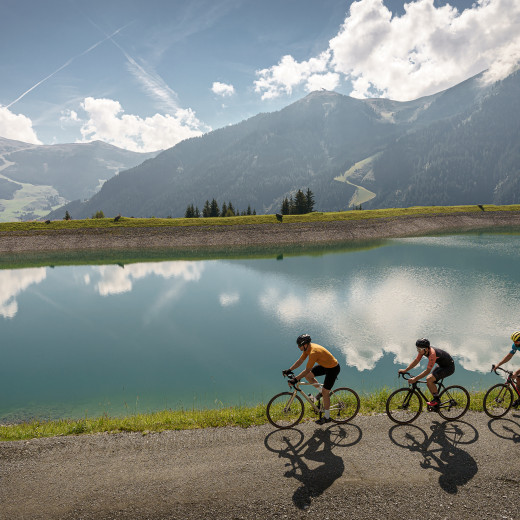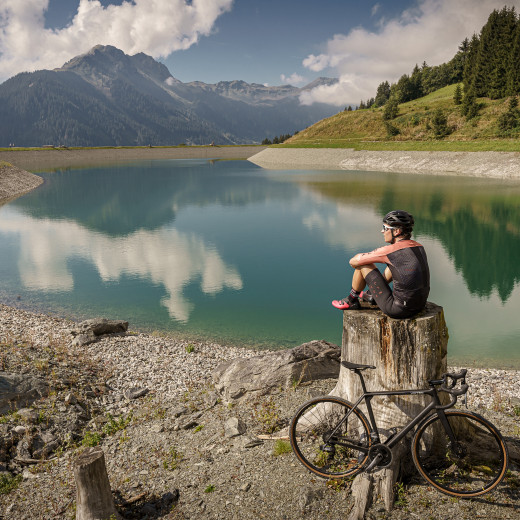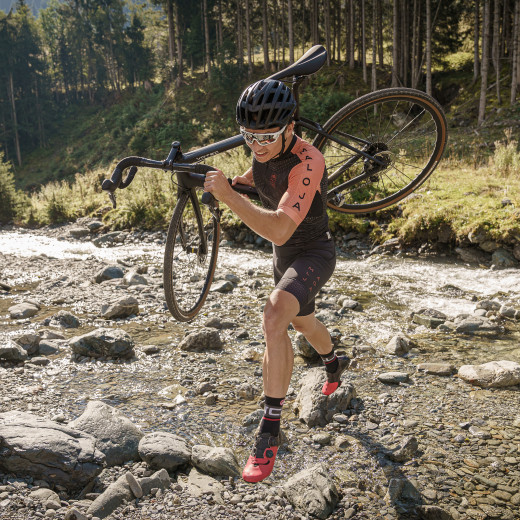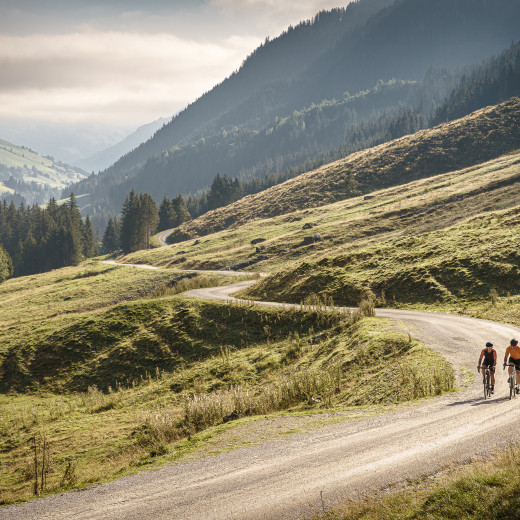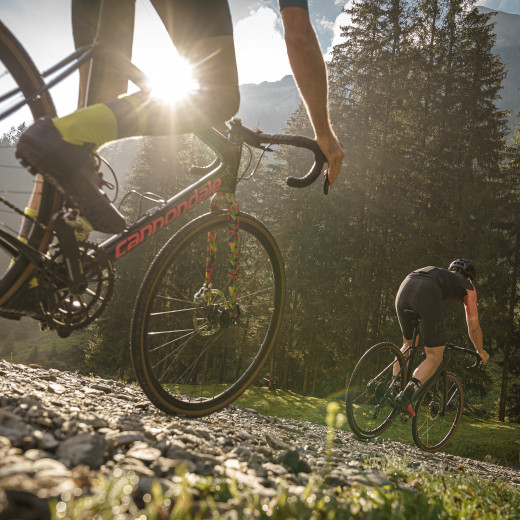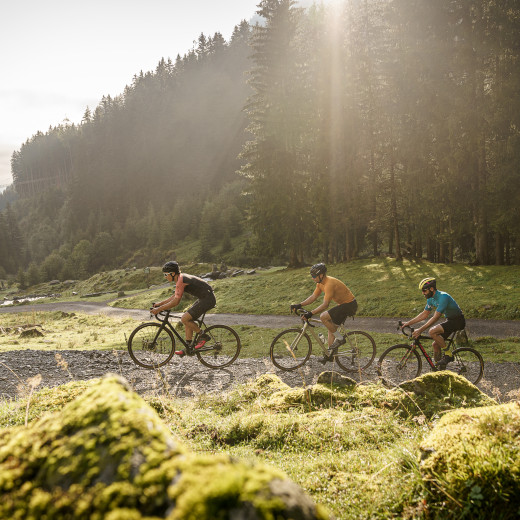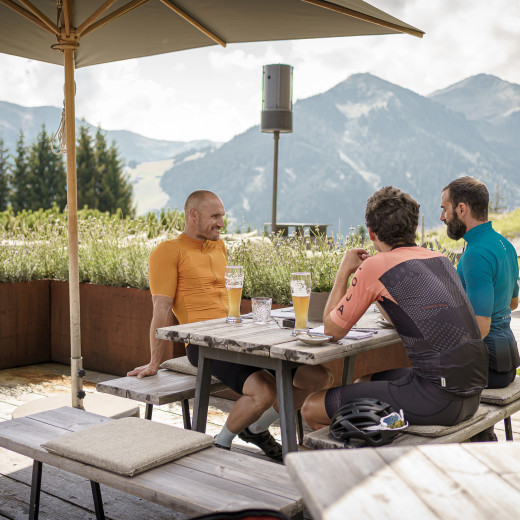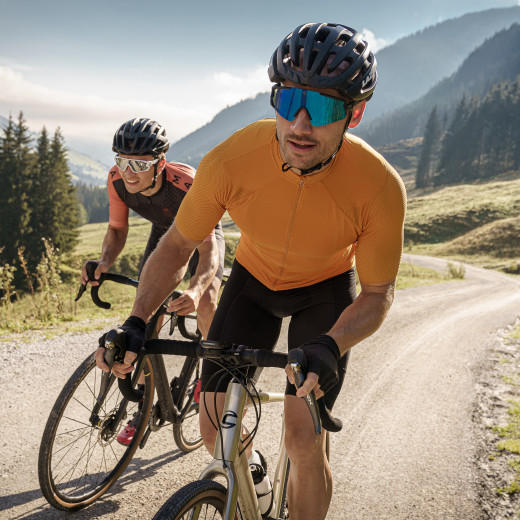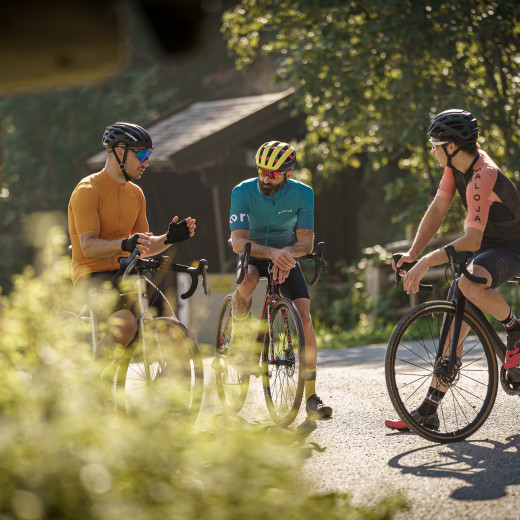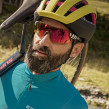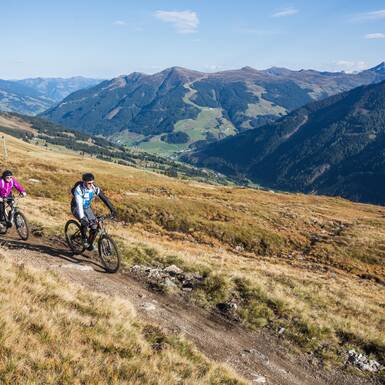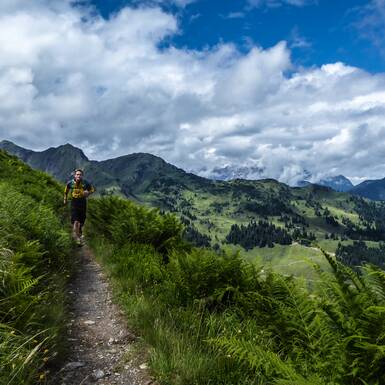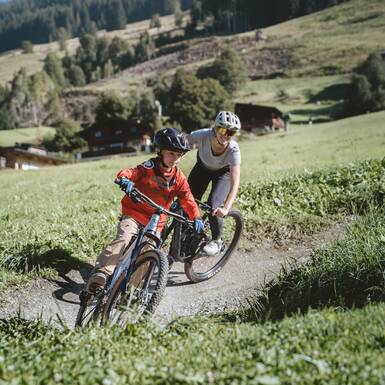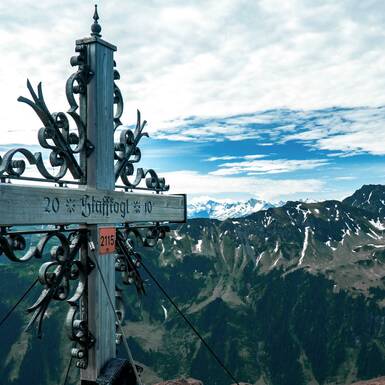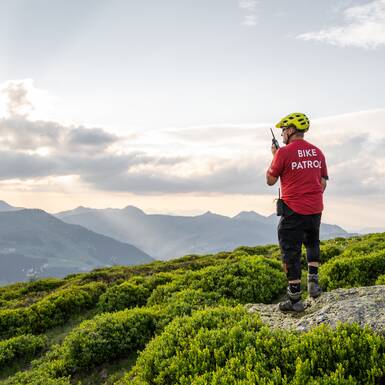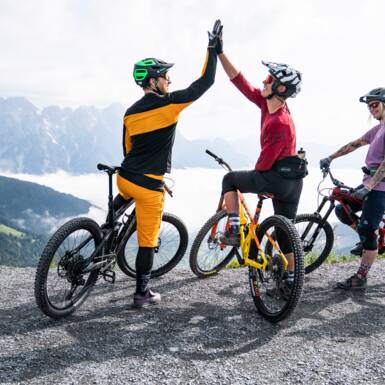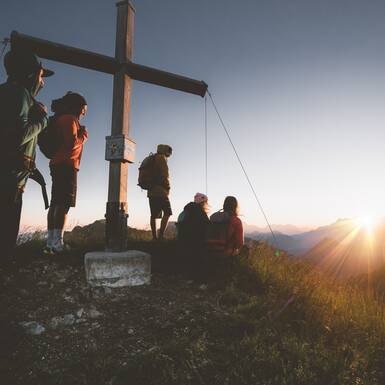- Outdoors
Gravel Biking in Paradise
Gravel biking in Saalbach? Frankly, we couldn't really imagine it. Sure, the Alpine paradise in Pinzgau has been on the map for bikers for a long time - but they are mountain bikers. With perfectly maintained descents, lifts, and a perfectly shaped bike park, Saalbach has proven to make bikers happy - but we don't need all this effort on a gravel bike. Because gravel biking means: reduction to the essentials. Gravel bikes are a cross between a road bike and the fat, grippy tyres of a mountain bike. They are fast, agile, yet versatile. They don't require any weighty technical nonsense: no suspension, no electronics. All we need for our happiness is the bike, a few friends, lots of nature, fine gravel roads and flowing trails. But wait a minute - nature, gravel, and trails, of course, there's plenty of all that in Saalbach. We also know the locals in Saalbach, and they have promised us a little gravel paradise here. So, we'll be happy to drop by for a visit in late summer and mingle with the biker crow
Alongside the guys and girls in their baggy clothes, with protectors and the full-suspension bikes, we look a bit different in spandex and with our spartan gravel bikes, but that doesn't faze anyone here. The biker vibes connect us on a deeper level, and here in the Glemmtal, we are, after all, in the "Home of Lässig". So, a quick espresso in the village and then we head off into the world of Alpine gravel bliss. What the locals didn't tell us so clearly in advance: Gravelling in Saalbach is Alpine Gravelling. That means first the work, then the descent. The long Alpine ascents are, of course, a completely new challenge for every flatlander. But even more challenging than the sometimes energy-sapping climbs is the surface on which we move here. Alpine gravelling almost always means loose, stony ground, either fine gravel or large stones. If you usually ride on field and forest paths and with good grip, you first must work on some riding technique skills. On steep climbs, it's better to stay in the saddle because otherwise, the rear wheel has no grip. You should quickly develop a whole new feeling for the brakes in fast bends, especially those on the front wheel. Alpine gravelling is an entirely new experience and expands the gravel world as we have known it so far. We'll take a look at the whole thing on a leisurely familiarisation tour, the Gravel Devil.
The Orientation Round
With only 32 kilometres, you'll still have to deal with 920 metres of altitude on the clock. Welcome to the Alps. It's best to simply ignore our legs and not even look at the altitude display on the bike computer, but instead enjoy the view. The view is charming right from the start. We start at the end of the village on the wide promenade that runs along the river Saalach up to the Teufelswasser (Devil's Water), to which the loop gets its name. After the first climb, it's worth a stop here not only to take a sip of the cool devil's water (which is neither boiling hot nor acridly sulphurous but rather comes from a mountain spring). To prevent the devil from getting any ideas, the people of Saalbach have erected a chapel above the Devil's Water, which is the perfect photo spot. We use it to take a deep breath because now comes the first steep uphill, including a trail section on the way to the Ossmann-Alm. Once there, we have reached the first highlight. Those who are already exhausted should think about their physical condition, ideally during a stop at the mountain hut.
With or without a stop: After the climb, we enjoy the first descent and the way back to Hinterglemm and Saalbach. So, this is how Alpine gravelling works: first the sweat, then the big grin. Once we reach the bottom, we head up towards the Hochalm reservoir, where the next photo opportunity awaits: a great view of the long valley that the Saalach river has carved out over thousands of years. We pedal on, always looking down into the valley and at the peaks opposite, towards the Rosswaldhütte, at 1,565 metres, the highest point of our tour. Shortly after, the Wieseralm awaits, and here at the latest, a stop for refreshments is a must. If only to have more downhill power available with a well-filled tummy. From here, the bikers also shoot down into the valley, but for us, it simply feels more real on the gravel bike, more direct, without filters. The breeze in the face feels good, and the winding descent along farm tracks rewards us for the almost 1,000 metres of altitude we pedalled. After this day we understand: The price uphill is heavy legs, but as a reward you appreciate every metre of the descent twice as much. Cool!
Serious gravelling? With pleasure!
Those who have acquired a taste for this exquisite one-gravelling can tackle more serious gravel-tours Saalbach Hinterglemm in the next few days. The folks in Saalbach have a detailed description of the route for all tastes and requirements.
How about three lakes in one day: Lake Zell, Klammsee and Ritzensee over 88 kilometres? This scenic tour brings us closer to everything the Kitzbühel Alps around Saalbach have to offer: After heading out of the valley on the cycle trail, we head for the chic old town of Zell am See and its lakeside promenade with another magnificent mountain panorama. Then we continue in the direction of Kaprun and follow a gravel trail to the Klammsee lake with a view of the Kitzsteinhorn and the glacier ski area. Here we realise once again: you only earn views like this when you're gravelling in the Alps. Simply priceless! The way back leads via Maishofen and the Ritzensee, the third lake of the tour. If this tour of around six hours was too leisurely for you - there are less than 600 metres of altitude difference here - simply reach two compartments higher into the rack with the Saalbach Gravel Tours.
The Extreme Scream tour caters for all those who want more distance (104 km) and are fed up with metres in altitude: There are almost 1400 hm to overcome here. The epic loop leads out of the valley to Maishofen in the direction of Pillersee, Fieberbrunn and back through the mountains to Saalbach and Hinterglemm. Here, too, many highlights await, big and small. For example, the castle ruins of the Pass Strub fortress on the border to Tyrol, the tranquil Pillersee lake or the "Eiserne Hand" inn, which, despite its daunting name, invites you to take a break. The tour continues to the Schreienden Brunnen, from which it takes its name. The locals call the loop "tough, but picturesque". After a good nine hours, however, we "lowland Tyroleans" only have limited energy and attention left for the tourist aspect and the impressive viewpoints. The following applies to this challenge: Only the tough return back to Saalbach without a battle. After this challenge, the grin on your face over a beer after the tour is all the broader for it.
But you can choose your challenges: Whether you're a hardcore altitude climber or a leisurely gravel biker with a focus on a priceless panorama, if you haven't yet experienced the Alps on a gravel bike, you should definitely make the change. The best place to do so is here, at the Home of Lässig

